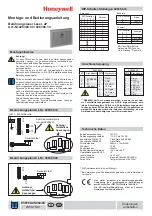
16
17
Detailed Recorded Inspections
Detailed recorded inspections should:
•
be carried out by a trained competent person to ensure the safety and integrity of the Safety Harness;
•
recorded in the record table contained within these User Instructions;
•
be carried out on a regular basis. The frequency of the detailed recorded inspection should deemed through
Risk Assessment taking into account legislation, equipment type, frequency of use, and environmental condi-
tions, which may accelerate the rate of deterioration and physical damage
•
be carried out at least every 12 months regardless of usage.
Maintenance and Storage
Maintenance of this IKAR GmbH Safety Harness must only be carried out by a trained and competent
person, who will:
ensure that NO alterations to the Safety Harness are made, clean the product using the following procedure:
•
using only warm water
•
using only mild detergent
•
using only a sponge or soft nylon brush
•
using fresh clean water to rinse the detergent off the Safety Harness
•
drip dry the equipment
•
allowing the Safety Harness to thoroughly dry out before next use
ensure that the following cleaning methods are NOT used:
•
water over 40º C
•
bleach
•
any detergent not suitable for bare skin
•
wire brushes or other scouring agents
•
jet wash or other power products
•
radiators or other direct heat sources
ensure that a thorough visual and tactile examination of the lanyard is made after cleaning, before
the item is allowed to be re-used.
make sure that contact the manufacturer before disinfecting the Safety Harness
Storage
ensure that the Safety Harness is stored in an area that is:
•
clean
•
free from airborne contaminates (e.g. dust or sand)
•
free from harmful chemicals (liquid or fumes)
•
dry
•
not in direct sunlight
•
not subject to extreme temperatures (below -15°C and above +50°C)
•
ensure that the Safety Harness is not stored under tension or load
•
store and transport ideally in a purpose supplied bag, box or cabinet, to prevent any damage
ENGLISH
















































